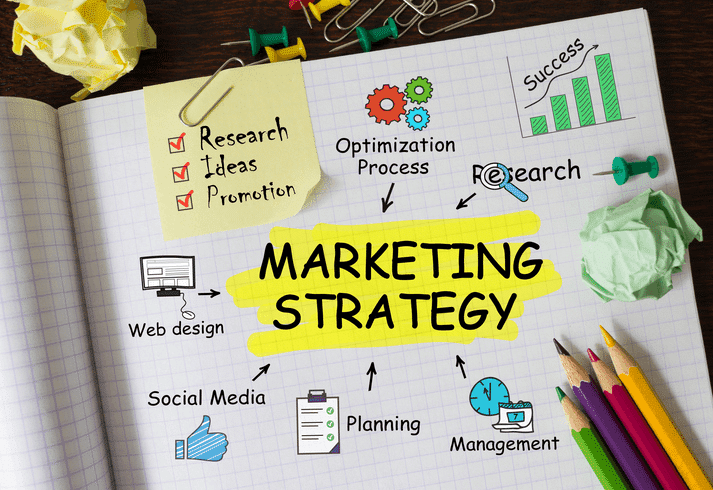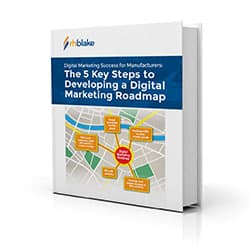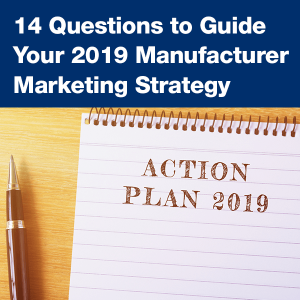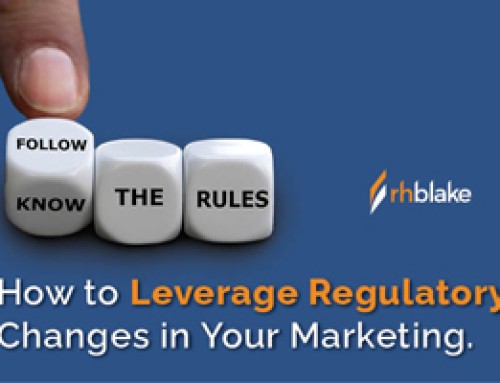14 Questions to Guide Your Manufacturer Marketing Strategy
Marketing strategy planning is stressful. It’s hard to know where to start – and often that leads to reverting back to what you’ve always done rather than being strategic about how you can improve your manufacturer marketing strategy. Below are 14 key questions that will guide your manufacturer marketing strategy to improve your marketing and overall business performance.
Talent
As Jim Collins states in his famous business book, “Good to Great,” you need to make sure you have the right people on the bus before you can drive it in the right direction. In other words, the right people in the right roles can make all the difference, and that’s why the first questions guiding your manufacturer marketing strategy are directly related to the talent in your organization, and specifically your marketing team:
- What are the roles and responsibilities of the existing marketing team?
- How are gaps in capabilities affecting performance?
As we know, manufacturer marketing is evolving. What worked 10 years ago is no longer effective. Your marketing team needs to be up-to-date on the latest trends in not only the marketing industry, but manufacturer marketing specifically. They need to be willing to try new things and know how to track marketing campaign success. They may need training to ensure they have the knowledge needed to be successful.
Talent just might be your most important asset. You can have a killer manufacturer marketing strategy, but without the talent to implement it, it doesn’t matter. Make sure you have the right people on your team and that they are living up to their full potential in their roles. If there are gaps in knowledge that you can’t fill, consider outsourcing those initiatives to a b2B marketing agency that can support your current marketing team.
Technology
As mentioned above, the importance of staying current can’t be underestimated. That is why evaluating technology comes right after talent when addressing the questions that should be guiding your manufacturer marketing strategy:
- What are the core components of our existing marketing technology stack?
- Are gaps in technology affecting performance? For example, is the lack of a marketing automation solution hindering our lead-to-sale conversion rate?
You can’t expect your marketing team to implement new marketing initiatives without the right technology. Technology can be expensive, but the right technology can streamline your marketing initiatives and help you track ROI.
How do you know which technology is the right technology? Different technology exists for your different needs – project management, research, sales, analytics, marketing automation, etc. With hundreds of options available at a multitude of price points, you can’t explore all options. Talk with your marketing team or agency about which tools are the most effective for manufacturer marketing and your specific business. From there, evaluate which technology can save you time, make you team more effective and allow you to track your progress within the scope of your needs today and scalable if needed in the future.
Again, a marketing partner who already has the technology and expertise may be the most cost-effective option. Marketing agencies, like RH Blake, are up-to-date with the latest technologies, know what works for the manufacturing industry and are experienced in using the technology. The learning curve to master certain technology, for example marketing automation, can be fairly steep if you don’t already have someone on your marketing team with experience with that specific technology.
Strategy
After ensuring you have the right talent and technology in place, you can really dive into the questions that are going to drive your manufacturer marketing strategy:
- What is our company’s unique value proposition?
- What are our current target markets (e.g., verticals, geographic)? How will those evolve in the next 1 – 3 years?
Your company’s unique value proposition is already outlined and clearly defined for all to know, right? Your unique value proposition is a simple clear statement describing the value you offer your customers and what sets you apart from the competition. It should be the driving force of your manufacturer marketing strategy.
 When developing your unique value proposition, you need to determine what your customers actually value the most about your company, not just what you think they value. This could be done through thorough Voice of Customer research. It’s also important to note that you will probably have more than one unique value proposition depending on your various market segments.
When developing your unique value proposition, you need to determine what your customers actually value the most about your company, not just what you think they value. This could be done through thorough Voice of Customer research. It’s also important to note that you will probably have more than one unique value proposition depending on your various market segments.
Define those market segments and target markets. You should know which target markets are most profitable for your business and if this has remained steady or changed over the years. Is there any reason to think it will change in the future?
Your marketing strategy should speak directly to your target market(s), which leads us to the next questions that can guide your manufacturer marketing strategy:
- Does your typical specifier/buyer tend to be an individual person or a committee of buying process influencers?
- Have buyer and influencer persona profiles been clearly defined and prioritized?
Now that you understand what you can offer your target market, think about how and where you are going to reach them and with what message. Having buyer and influencer persona profiles defined helps streamline this process and also shows where you should be focusing your efforts.
Personas will help you understand buyers’ pain points and how you can address them. They give you insight as to how buyers make their purchasing decisions, when and why. They address where buyers go for trusted information and what ultimately influences their decision to purchase. This process can be time consuming, but well worth it. Without personas, your marketing messages are often just hunches, and are not based on any real research into your target markets.
After really defining your unique value proposition and target markets, the next question you need to ask is:
- What are our company’s greatest opportunities for growth?
Growth should be an essential part of your marketing strategy. You want to continue to grow market share and expand in the future. Your marketing strategy should be forward-thinking, not reactive to what occurred in the past. Outline which target markets can grow, what new target markets to explore and what new product or service offerings can make your company more appealing to those audiences in the future.
Offering Strategy
Now that you have the big picture strategy questions nailed down, it’s time to think about your specific offering strategy. This sounds simple, but these questions are often left out of marketing strategy planning:
- Is your core offering a commodity product, or a customized product/service?
- How heavy is competition within your industrial sector niche?
In order to have an effective marketing strategy, you need to know how you can differentiate your company in the market. If you don’t have key differentiators, it is going to be difficult to stand out from your competitors. Identify your top 3 – 5 competitors and perform a competitive analysis. There may be areas where your competitors excel that you can improve on and vice versa.
Knowing where your strengths and weaknesses are in the market is half the battle. From there, you can strategize how to leverage your strengths and overcome shortcomings. And remember that your offering strategy should directly tie back to your unique value proposition.
Go-to-Market Approach
The next question revolves around your go-to-market approach:
- Do you sell through a distributor or dealer network? Or direct to the buyer? Or both?
This question is essential to understanding your buyers. If your business goes to market through a distributor or dealer network, make sure you communicate frequently with these channel partners to understand how your customers are interacting with your offering, as well as your competitors’. Since they are the ones with direct access to your customers, their input is invaluable.
You also want to make it as easy as possible for your distributors to buy from you, just as you do when you are going direct to the buyer. The difference is your message. Distributors are going to have different needs and pain points than end-customers. Your marketing strategy will differ widely depending on your go-to-market approach.
Performance
And finally, your 2019 manufacturer marketing plan needs to be measurable. Ask yourself these key questions:
- Do your marketing key performance indicators (KPIs) clearly reflect the achievement of overall business goals?
- How are KPIs currently being tracked and monitored?
KPIs are essential to determining the success of your marketing strategy. Evaluate your KPIs for 2018 (if you had them in place) and see if they are tied to overall business goals. While there is a place for marketing-specific KPIs, the ones that are really important are those clearly tied to the company’s goals, not just the marketing department’s goals. KPIs will vary by company, but examples include:
- Website traffic
- Landing page conversion rate
- Visitor to lead conversion rate
- Cost per lead
It can be easy to identify KPIs, but tracking them can prove to be more difficult. Some KPIs, like website traffic, can be measured using free tools (Google Analytics), while more sophisticated KPIs may be dependent upon investing in technology, as mentioned above.
Once you have your KPIs in place, it’s important that you regularly monitor them. If something in your strategy isn’t working, don’t wait for next year’s marketing strategy, make the changes now. That’s the great thing about real-time data – you can make changes quickly to adapt to the market and what’s effective.
Conclusion
While creating a manufacturer marketing strategy is never easy, addressing these 14 questions should help guide you from beginning to end. And by starting now, you can ensure you have the talent, technology, strategy, approach and tracking in place to ensure success. Need help developing a manufacturer marketing strategy? Contact RH Blake for industry-specific marketing expertise.
Free Download: 5 Key Steps to Developing a Digital Marketing Roadmap
A Must Have Digital Marketing Guide for Manufacturers



 Written by Dan Konstantinovsky
Written by Dan Konstantinovsky




